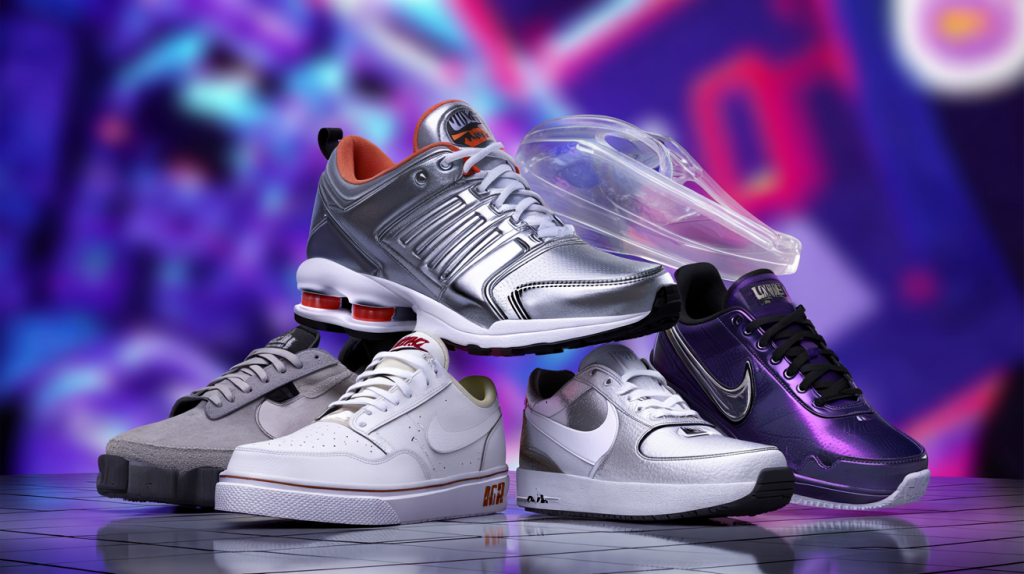Y2K Nike sneakers are back in force. Discover the key 2000s models, real data, and smart tips to buy, wear, and collect without getting burned.
Clicks chase a feeling. The 2000s Nike wave delivers it in full color: fat-tongue Dunks, crisp Air Force 1s, space-age Shox, and techy Prestos that made feet feel free. A style time capsule that now powers resale charts and street outfits, often on the same day.
Context matters fast. Nike SB launched in 2002 and flipped skate culture into a global hunt, while shock-absorbing Shox debuted in 2000 and the Air Presto arrived the same year with T-shirt sizing. Limited drops set the tone for scarcity, collaborations set the tone for hype. Today’s rush traces straight back to those releases, with numbers to prove it.
Nike 2000s sneakers that shaped the culture
Nike SB’s 2002 start put the Dunk Low on a new path, from padded tongues to storytelling colorways (Nike SB, 2002). The “Pigeon” scene in 2005 turned a local drop into breaking news and a benchmark for lines and police presence (Complex, 2017).
Scarcity wrote the rules. The Nike SB Dunk Low “Paris” from 2003 reportedly counted around 150 to 200 pairs, each unique due to Bernard Buffet artwork placement (Sotheby’s, 2021). The UNDEFEATED x Air Jordan 4 from 2005 numbered just 72 pairs, a ceiling that still dictates auction prices (Sotheby’s, 2020).
Tech made the era feel new. Nike Shox hit retail in 2000, amplified by Vince Carter’s gravity-bending ads (Nike News, 2000). The Air Presto launched in 2000 with S to XL sizing, a comfort pivot that has aged well for daily wear (Nike News, 2018). Nike Free arrived in 2004 and taught a generation to like flexible midsoles (Nike News, 2014).
Regional drops stirred a global chase. The CO.JP program in the early 2000s seeded Japan-first colorways, including the Air Jordan 1 “Japan” that released in 2001 in 2,001 pairs (Nike SNKRS, 2020). That playbook of limited numbers is still echoed weekly.
What to buy now from the 2000s: models, years, and why they matter
Collectors track originals and faithful retros, but the entry points vary by budget and wearability. Market data shows the appetite is not just nostalgia. SB Dunk trades surged more than 300 percent year over year in 2020, with 2000s colorways leading many charts (StockX, 2020).
- Nike SB Dunk Low “Pigeon” (2005) : cultural pivot that defined the modern drop (Complex, 2017)
- Nike SB Dunk Low “Paris” (2003) : 150–200 pairs, art on leather (Sotheby’s, 2021)
- UNDEFEATED x Air Jordan 4 (2005) : 72 pairs, military suede and orange pops (Sotheby’s, 2020)
- Nike Shox R4 (2000) : futurist runner that screams Y2K (Nike News, 2000)
- Nike Air Presto OG (2000) : T-shirt sizing, glove-like fit (Nike News, 2018)
- Nike Air Force 1 “White on White” 2000s era : the everyday uniform, still rotating
That mix covers story, scarcity, and daily rotation. Prices vary, but the logic holds: authentic 2000s pairs with intact midsoles, clear sizing tags, and original parts keep value better over time.
How to shop 2000s Nike safely: condition, sizing, legit checks
Old glue can crack. Pairs from 2000 to 2006 sometimes show midsole separation or crumbling foam, especially if stored poorly. Ask for clear photos of outsoles, midsole edges, and collar padding. Look for star wear on AF1 and Dunk toes and any repainting along the midsole line.
Sizing feels different. Prestos follow S to XL rather than numbers, so measure foot length and check Nike’s 2000 chart. Early SB Dunks run snug due to thick padding, while Shox R4 can feel narrow through the forefoot. Try a modern retro in-store to approximate fit.
Legit checks save money. Compare production tags inside the shoe, noting format and factory codes. Many 2000s tags show a YY-MM to YY-MM production window. Stitching should be tight around the Swoosh and heel tab. For SB, look for padded tongues with centered labels and consistent thread color. When in doubt, use third-party authentication and archive photos from Nike News, Sotheby’s, or trusted forums.
Box condition matters for resale. Original tissue, lace baggies, and extra laces can raise final price brackets, especially on SB and collaborations.
Prices, data, and where the trend goes next
The data trail is clear. Nike SB’s 2020 resurgence lifted the whole backlog of 2000s pairs, crossing into mainstream platforms where search interest for “Nike Dunk” spiked worldwide that year (StockX, 2020; Google Trends, 2020). CO.JP-era storytelling returned via select retros, validating the format for new buyers (Nike SNKRS, 2020).
Two levers drive the next steps: supply clarity and wearability. Limited numbers like 72 or 2,001 pairs keep grails at auction, while wider retro runs keep the look on the street. The opportunity sits in clean general releases that echo 2000s specs without fragile foam. That is where daily rotation happens.
Practical move now : set alerts for restocks of Shox R4, Presto basics, and straightforward Dunk Lows. Cross-check listings against original year photos. Buy pairs you will actually wear, then store cool and dry. Simple habits protect value, and the fit feels definitly better when the shoe sees pavement.
For those chasing originals, patience beats luck. Track provenance, verify production tags, and budget for potential sole swaps. It is how collections avoid regrets while keeping the spirit of the 2000s alive, one careful pair at a time.
